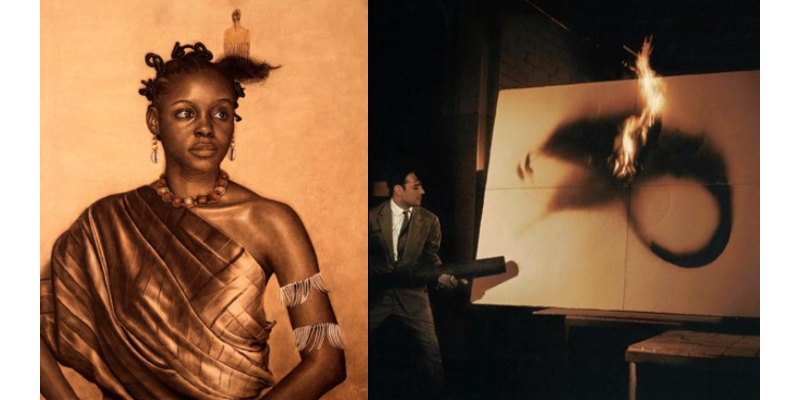Fire has long fascinated humans- it evolved in purpose from a primitive tool for survival to an object of scientific fascination and study. This interest in the element, its richly coloured embers, and the marked path it leaves behind is perhaps what greatly influenced its birth as a form of artistic creation. Pyrography- literally meaning writing with fire, is often used as an umbrella term to describe popular styles of fire art. However, art with fire has existed for centuries and has always been more than just calligraphy with fire or ‘woodburning’ – a popular style of fire art. Taking root in many ancient cultures, fire art has a rich history behind it, one that has stood the test of time and changing societies. The artists who practice it today- from those engaged in making portraits, to ceramics and glassblowing- contribute to the upkeep and refining of a form that predates several modern-day institutions.
How has Fire Art been across Time?
Ancient Egypt, China, Peru, and Rome have all been sites of the remnants of fire art. Generally done using a heated rod, the engravings can be found on everyday items and decorative pieces. The Nazca mate cup from South America is one of the oldest surviving examples of pyrography on pottery, dating to about 700 A.D. However, remnants and pieces of pottery with pyrography on them have also been found to be dated as far back as the Han dynasty in China and even up until 200 B.C. in Peru itself.
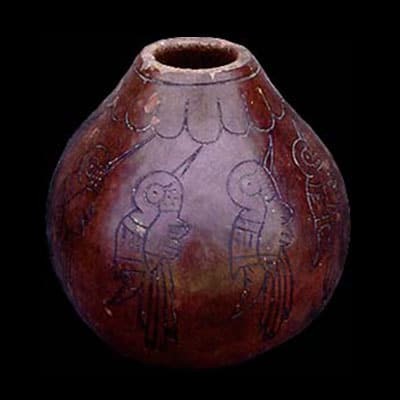
Source: Working the Flame
The trend of using fire to mark personal items continued into the medieval centuries with musical instruments also being added to the lot. A way to engrave unique patterns, medieval pyrography is seen on the two harps from the 14th-16th centuries- named the Trinity and Queen Mary, held in Ireland and Scotland today. The wealthy of the time were known to mark their wooden chests and belongings with pyrography. Blacksmiths were also popular users of heat from fire during this period. An important invention that allowed the form to flourish was that of portable stoves.
By the 20th century, a new discovery once again altered the world of pyrography. Alfred Smart, a Melbourne-based artist had discovered that passing benzene through a hollow metal pencil would allow the tool to remain heated throughout the process, unlike before. This made the form more accessible to people, allowing it to enter the realm of craft. The skill was advertised in women’s publications and as an acceptable hobby for the demographic. Furthermore, tinting and shading became popular and possible.
Popular Fire Artists: Fire Art Today and Fire Art Previously
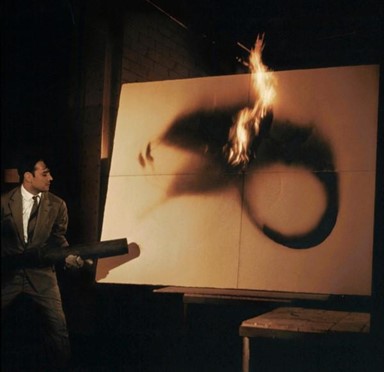
Source: Eldvarm
While wood-burning and pyromancy have dominated conversations surrounding fire art, many great artists who have worked with the element have opted for alternate mediums, forms and means to do the pieces. Yves Klein, a renowned contributor to the New Realism movement, for example, created a series named, ‘Fire Paintings’ in 1961. Created at the Centre d’Essais du Gaz de France, the series featured what has come to be described as alchemy in art. Klein held a blow torch weighing forty kilograms, shooting the flames metres away onto combustion-resistant Swedish cardboard. The pieces were then immediately shot with jets of water, cooling the cardboard before it was charred. He created mesmerizing pieces full of gold and black streaks, marked for their “recording the presence of the absence”. In his 1961 exhibition, Klien further explored his fascination with fire through pieces such as “Fire Wall”- featuring a grid of fifty Bunsen burners blowing into the air, and “Fountain of Fire”- flames arranged in two columns that shot three metres into the air.
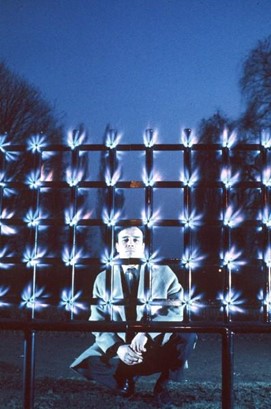
Source: Eldvarm
While Klein’s pieces are known for their elemental rawness and abstract beauty, figurative artists of renown too, are to be found in the field. Today, Alex Peter Idoko, a Nigerian artist with an admiring fan base on social media, is known for his immersive, realistic, and textured portraits. Practising hyperrealism, the artist discovered his interest and skill in the field early on, developing a style of art that features fire, sandpaper, razor, and other tools on wood. He describes his subjects to be inhibiting an “expressive-realism state”, allowing them to convey layers of identity and sociocultural realities. Identifying his pieces as having surrealist tendencies, Idoko talks about the art of burning and engraving details that allow for the careful construction of the pieces. His portrait subjects hold the gaze of the viewer with their powerful presence, tones, and features.
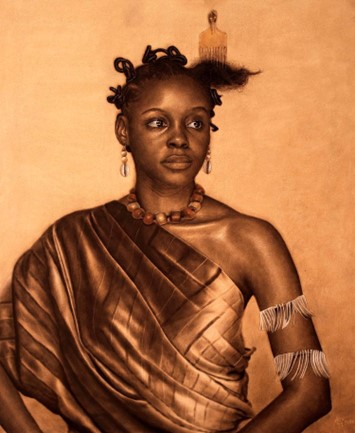
Source: Alex Peter Art
What about the Women?
Though male-dominated, the various fields of fire art have not been deprived of the contributions of women. Rene Culler, a glass-blowing artist creates intricate pieces of glasswork through the manipulation of flames. Specifically, her pieces focus on the absorption of light that allows for texture on the glass and transparency. Corrina Sephora, a blacksmith, is known for her metal pieces and installations- that deal with the themes of transformation and even loss. Working on an array of pieces that range from public installations to mixed media gallery pieces, the artist’s work captures the essence of metalworking in its intricacies. Pyrography has proven very popular with many artists taking up the form, including Andrea Pate, a local artist in the United States. Pate is known for her intricate images of animals and others on wood. An illustrator, Pate often tries to incorporate other media into the pieces to create unique and often coloured outcomes- this also includes resin and paint. Fire art was also used as a mode of preserving fine arts by a group of women artists in Bamyan, Afghanistan in April 2021. Focused on burning designs into wood, the studio aimed to be a source of opportunity for women artists to develop their skills, partake in fine arts and earn an income.
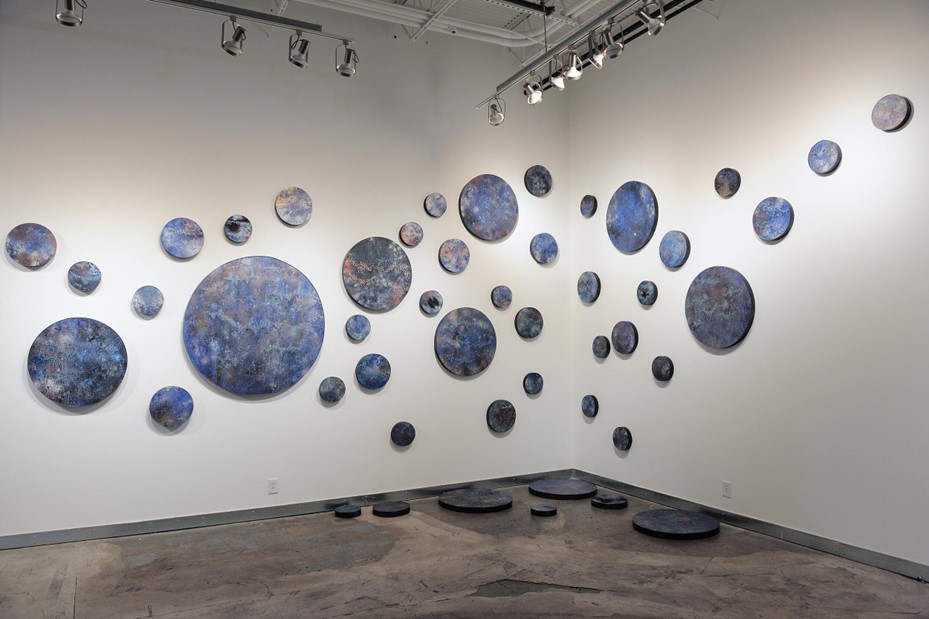
Source: Corrina Sephora
Fire is a recurring symbol in many cultures- it has stood for divinity, purity, and resilience in many. In literature, it has occupied the themes of passion, beauty, and love, always aware of its own dangers and impulses. Art is made of fire, and the ideas of the artists who make these ethereal pieces seem to encapsulate all these notions. The notion of allowing fire, and the heat it generates, to create, in all its glory– despite its destructive and all-consuming nature- seems to be the most poetic expression of the nature of art itself.
SOURCES:
- alexpeterart.com
- Working the Flame- History of Pyrography
- Rferl.org – Afghan women pyrography artists
- eldvarm- Stories by the fire, The art of fire Yves Klein
- wilmamag- Playing with fire
- Rene Culler.com
- Corrina Sephora.com
Read Also:

Contributor


